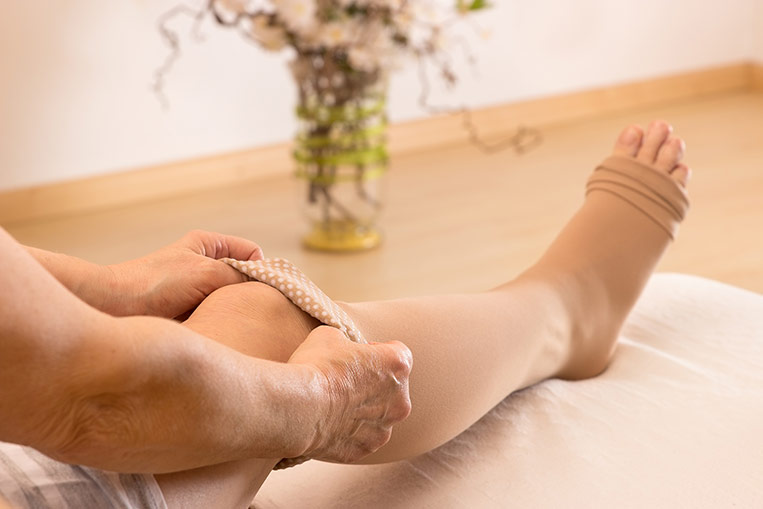Lymphedema
Lymphedema is swelling of parts of the body because of lymph fluid build-up in the soft tissues of the body. There are two types of lymphedema: genetic lymphedema (called primary), and acquired lymphedema (called secondary).
Lymphedema is a condition of the lymphatic system of the body. This system filters waste products out of the body. The lymphatic system is a network of vessels throughout the body, which disposes of waste from the body and circulates immune cells.

Risk factors
Risk factors for secondary lymphedema include:
- old age,
- being overweight or obese,
- and rheumatoid or psoriatic arthritis.
These risk factors are notable for patients with cancer or undergoing treatment for cancer, as there are preventative measures for lymphedema.
Causes
Lymphedema is a condition that arises from an issue with the lymphatic system, usually a blockage through one of the lymph channels. Causes of secondary lymphedema include surgical damage, in which case, lymphedema is usually temporary, as well as infections, cancer, and radiation therapy. Causes of primary lymphedema, which is a rare, inherited condition, include Milroy's disease, Meige's disease, and late-onset lymphedema.
Symptoms
Lymphedema can have a range of symptoms, though most people will have a feeling of heaviness or fullness, usually in an extremity like their arm or leg. Other symptoms include a dull ache, difficulty moving a limb or bending a joint due to the swelling, and a feeling of tightness in the skin. Patients with lymphedema may notice that rings, shoes, or watches may feel too tight.
Complications
There can be serious conditions of lymphedema. Lymphedema can lead to infections, particularly if the affected area is injured. Lymphangiosarcoma, a rare form of cancer in the soft tissues can result from severe cases of untreated lymphedema.
Treatments
Treatments for lymphedema can be non-invasive or surgical. Non-invasive treatments include compression bandages and massage therapy, as well as elevation of the swollen area. There are certain lotions and certain dietary changes that your doctor may recommend. Surgical options include vascularized lymph node transfer and lymphaticovenous anastomosis.
Prevention
There are a few ways to prevent lymphedema, such as elevating affected limbs, avoiding tight clothing, proper hygiene, protecting and resting affected areas, as well as avoiding ice or heat on affected limbs.
